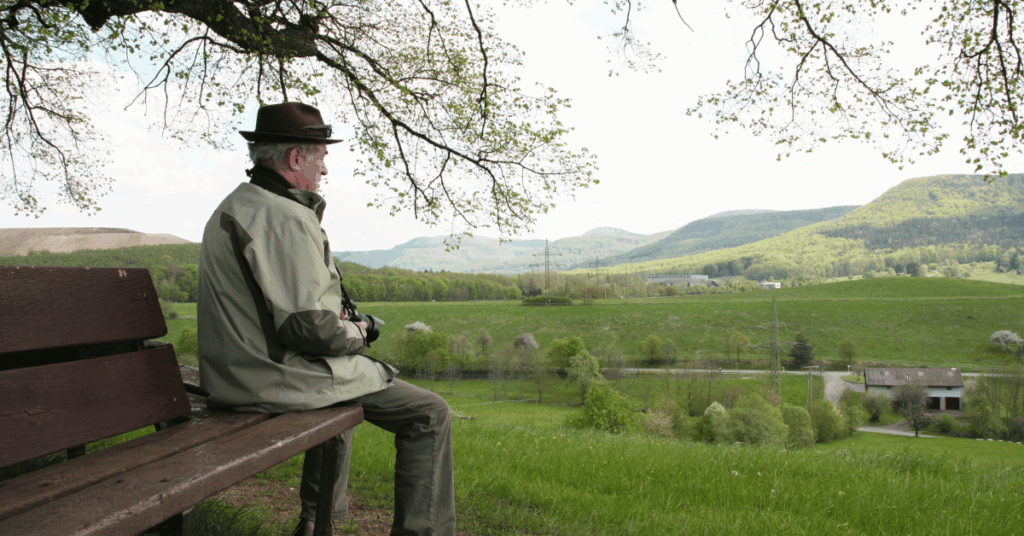“Paul” had been living in long-term care for some time. Although he had dementia, he remained physically independent and enjoyed strolling around the property. Recently, the care home began upgrading the garden area to create a welcoming space for residents and their families. The home wanted to create a safe, welcoming, outdoor, and restorative garden setting for residents, families, and visitors to gather, enjoy a picnic, and spend time outdoors.
Paul’s Behaviour That Surprised Workers
During the renovations, workers fenced off the garden and put up safety barriers. This, however, didn’t deter Paul. One afternoon, staff noticed that he had confidently moved the barricades and walked over to the workers. To their surprise, Paul knew exactly how to open and maneuver the barriers – skills that most residents wouldn’t naturally have.
A Connection to His Past
Rather than appearing lost or disoriented, Paul seemed energized and comfortable in the construction zone. When the workers asked what he needed, he simply started chatting with them. He spoke the way a supervisor might speak to his crew, sharing stories and light conversation while the men worked.
This moment revealed something important: Paul wasn’t trying to break rules or put himself at risk. The sight of tools, equipment, noise, and lights had transported him back to a familiar role – the many years when Paul was working in construction. Interacting with the workers felt natural, as if he was back on site with “his men.”
The Need for a Compassionate Approach
Paul’s actions were not random; they were a form of expression, tied to his identity and history. Understanding this helped staff see beyond the behaviour and recognize the meaning behind it. Instead of simply redirecting him or treating his actions as disruptive, acknowledging his background offered an opportunity to validate his sense of self and dignity.
The Impact of Understanding the Behaviour
By recognizing that Paul’s actions were not simply wandering but rather a reflection of his past, staff could meet him with empathy rather than frustration. Instead of shutting down the behaviour, they found ways to keep him safe while affirming his sense of purpose.
Paul’s story reminds us that behaviours in dementia are often echoes of a person’s identity, history, and passions. His determination to step into the construction zone wasn’t about defiance. It was about connection, memory, and belonging – recalling a time in his life when he felt alive, served a purpose, and created deep memories. By looking deeper, we can transform moments of concern into opportunities for dignity, trust, and meaningful engagement.
It also reminds us of the importance of education – not just for caregivers and healthcare staff, but for everyone who may interact with people living with dementia.
Even “unlikely” groups, such as construction workers in this story, can play a role in keeping residents calm and safe when they understand the condition and know what to expect.
Dementia-aware communities are safer, kinder, and more inclusive.
Protecting and supporting those who live with dementia is not just the responsibility of a care team. It takes the whole community, each with a basic understanding of dementia, to create environments where people are respected, supported, and able to live with dignity.
Free 20-Minute Consultation (for NEW Clients)
If you found this article helpful and if you’re worried about a loved one or a friend and aren’t sure where to turn, you’re not alone. We’re here to help! Reach out, and together we can brainstorm solutions tailored to your unique situation. Start by visiting our website at https://dementiasolutions.ca/private-consulting/ to schedule your free 20-minute consultation with one of our experienced Dementia Care Advisors. We’re here to support you every step of the way.
Dementia Solutions Family Support Membership
If you are a family caregiver to someone with dementia, then we invite you to join our Dementia Solutions Family Support Membership by clicking here. Gain access to interviews and videos of other dementia caregivers, access tools and resources, and support sessions led by our Dementia Care Advisors, and many more – exclusive for our members only.
DISCLAIMER:
This article is based on a true story; however, names, locations, and certain events have been altered to protect the privacy and confidentiality of the individuals involved. Any resemblance to actual persons, living or dead, or actual events is purely coincidental.
The contents of this blog are provided for information purposes only. They are not intended to replace clinical diagnosis or medical advice from a health professional.



